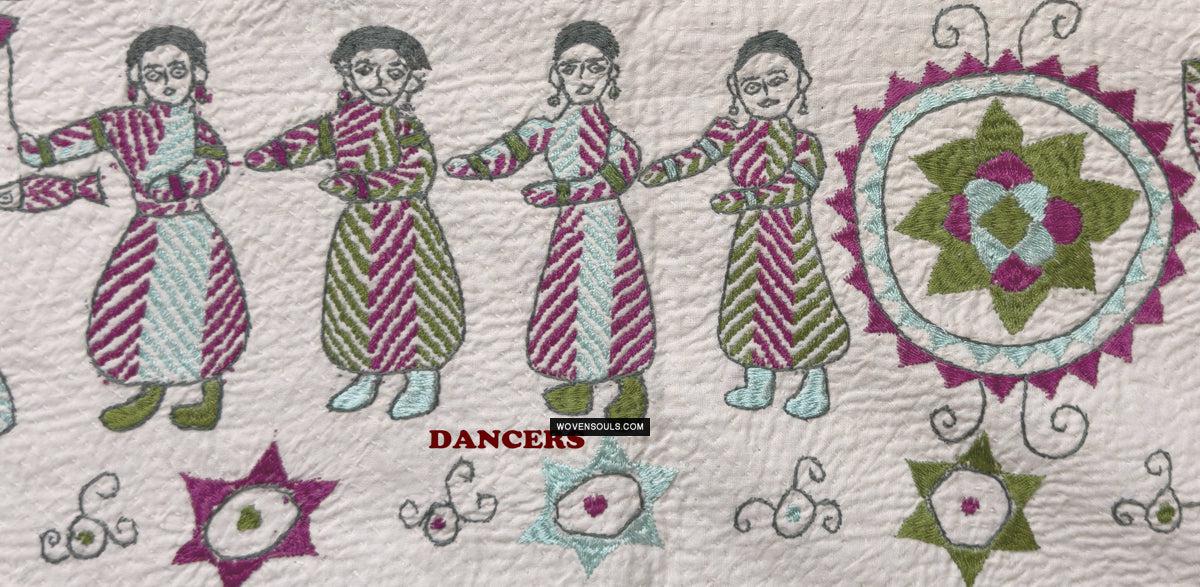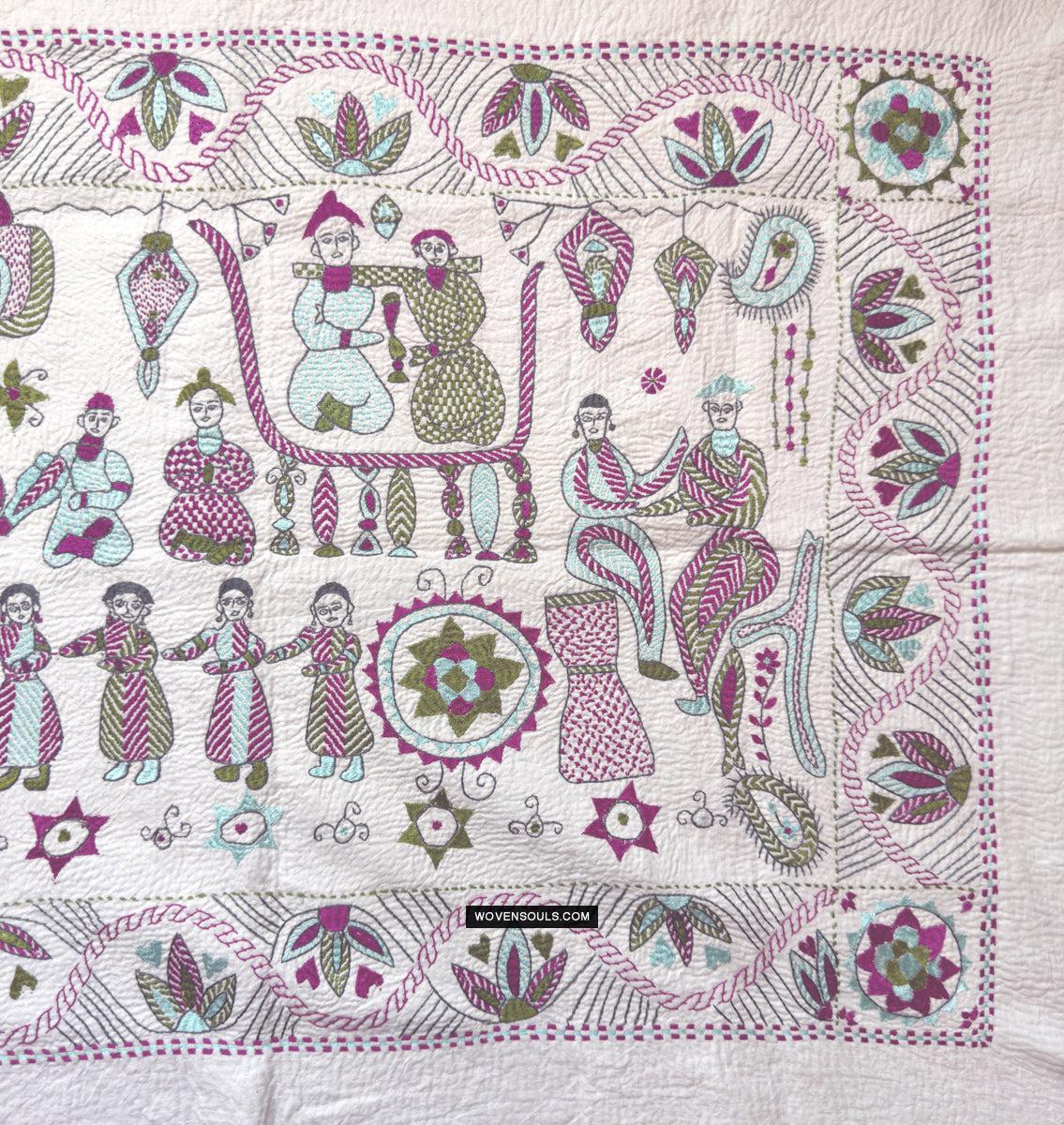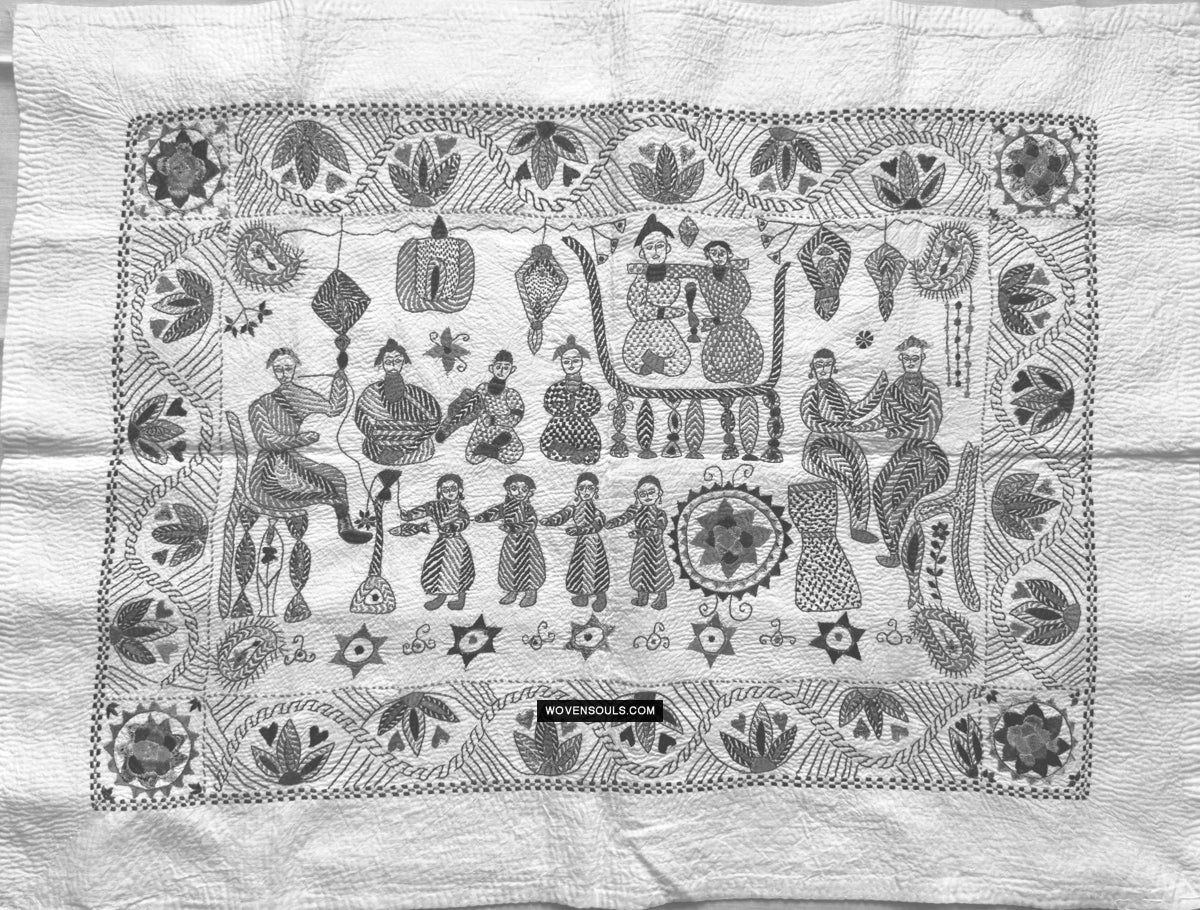1790 Vintage Bengal Nakshi Kantha Textile - Courtesan Scene
Vintage Figurative Nakshi Kantha -Textile Art of Bengal - Courtesan Scene
The extraordinary feature in this textile is the scene that is depicted*
This is clearly set in a 'Kotha' in which courtesans and dancing girls welcomed noblemen and wealthy patrons for entertainment. In the model of life in those days, courtesans offered all forms of entertainment - music, dance, discussions and more. There is no equivalent of such a word in English so a translation is not possible. If you have red the 'Memoirs of a Geisha" that model offers a parallel to understanding the Kothas. Classic Hindi films like "Umrao Jaan" and "Devdas" offer a peep into the world of the elite Kothas. Courtesans of the Kothas were trained musicians, poetesses, dancers, fashionistas and stylists. And they made it their 'business' to polish their mannerisms, their demeanor, their speech and persona in order to make themselves attractive to those who could afford their service of feminine company. Given their patronage they also featured in the list of the wealthy of the region.
But it is a topic not spoken about publicly in homes. So the fact that such a scene should find it's way into an embroidered textile makes me wonder about the origin.Who made this Kantha? Was it an aggrieved wife? Or a courtesan herself who had plenty to spare and could afford the use of silk thread?
Note the musicians, the dancers, the courtesans and the patrons. Note the chandeliers and the decorated floors. Note the hookah smoking pipes.
These are almost always cotton thread embroidered on cotton cloth. This one has silk highlights suggesting a non-frugal lifestyle.
Vintage - estimated to be from the 1960s-70s.
Size: 82 cm X 62 cm
Good condition
In light of the fact that this is so young and yet so elaborate, it is very likely that this is a replica of a masterpiece in a museum collection.



































































